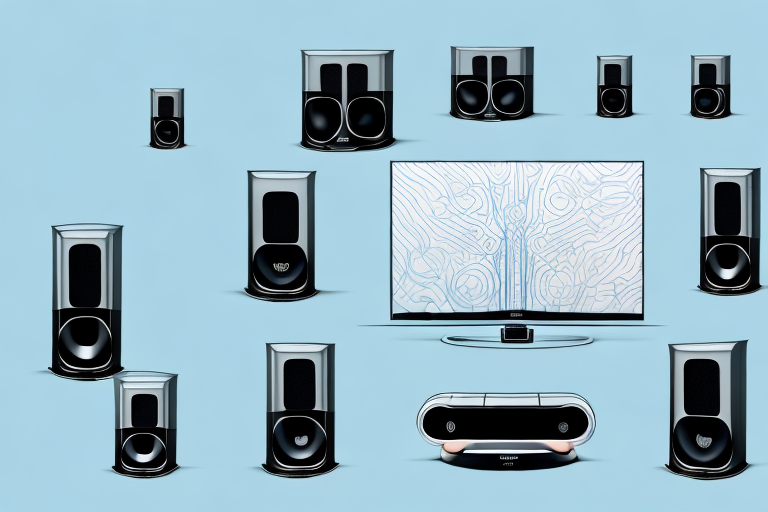Having a home theater system is essential for a quality entertainment experience. However, it can be frustrating when your Philips home theater system breaks down, and this can ruin your movie or gaming night. In this guide, we’ll explore some of the common issues you may experience with your Philips home theater system and provide you with a step-by-step guide on how to troubleshoot and fix them.
Understanding the Common Issues with Philips Home Theater Systems
Before diving into troubleshooting, it’s crucial to know what kind of issues may cause your Philips home theater system to malfunction. Some of the common issues include:
- No sound or low sound volume
- Poor picture quality or no picture at all
- Faulty remote control
- Defective speaker
These problems can be due to various reasons such as poor connectivity, damaged cables, hardware issues, outdated firmware, or software issues. Let’s look at the troubleshooting steps you can take when you face some of these common issues with your Philips home theater system.
Another common issue that users may face with their Philips home theater system is the inability to connect to other devices. This can be frustrating, especially if you want to stream content from your phone or laptop. The problem can be caused by outdated software, incompatible devices, or incorrect settings. To resolve this issue, ensure that your devices are compatible with your home theater system, update the software, and check the settings to ensure that everything is configured correctly.
Troubleshooting Steps for Philips Home Theater System
Step 1: Check Your Audio and Video Connections
One of the most common reasons for poor audio or video quality is faulty connections. Make sure all the cables are appropriately connected to your Philips home theater system’s audio and video outputs. Check the cables for any signs of damage such as fraying, cuts, or discoloration. If you find any issues, replace the damaged cables with new ones and test your system again.
Step 2: Update the Firmware of your Philips Home Theater System
Outdated firmware is another common cause of malfunctioning audio and video on your Philips home theater system. To update the firmware, connect your device to a stable internet connection and go to your system’s settings. Check for any available firmware updates and download and install them. Once the update is complete, restart your system, and test it to see if the issue has been fixed.
Step 3: Clean Your System and Remote Control
Dirt, dust, and debris can cause your Philips home theater system to malfunction. Clean your system and remote control using a clean cloth. Avoid using any harsh chemicals like alcohol or bleach, as they can damage the plastic. A gentle soap solution is ideal for cleaning the surface of your system, remote control, and cables.
Step 4: Troubleshoot your Philips Home Theater System’s Speaker
If you’re experiencing distorted or no audio, it could be due to a faulty speaker. Make sure that the speaker is connected to the system correctly. If it’s not fixed, disconnect the speaker and test the system with another speaker to see if the problem is resolved. If the issue persists, contact your local technician for further assistance.
Step 5: Consult Your Philips Home Theater System’s User Manual
If none of the above steps resolved the issue, consult your Philips home theater system’ user manual. Look for any troubleshooting steps that match the issue you’re experiencing, as the manual may provide a more in-depth solution for advanced or complex problems.
Step 6: Check Your Power Source
If your Philips home theater system is not turning on, it could be due to a power issue. Check if the power cord is plugged in correctly and if the outlet is working. If the outlet is not working, try plugging the system into a different outlet. If the power cord is damaged, replace it with a new one. If the issue persists, contact your local technician for further assistance.
When Should You Call a Professional? Troubleshooting Tips for Complex Issues with Philips Home Theater Systems
If you’ve tried all the steps mentioned above and still experience issues with your Philips home theater system, it’s time to call a professional technician. A professional can diagnose and fix the problem efficiently. Also, if you’re not comfortable working with electronic devices or lack the technical expertise, it’s best to have a professional take a look at your system.
It’s important to note that attempting to fix complex issues on your own can sometimes cause more harm than good. For example, if you try to open up your Philips home theater system and tinker with the internal components, you could accidentally damage the device beyond repair. In such cases, it’s always better to seek the help of a professional who has the necessary tools and expertise to handle the job.
Conclusion
Having a malfunctioning Philips home theater system can hamper your entertainment experience. However, most of these issues can be resolved by following the troubleshooting steps mentioned above. Regular maintenance, checking for damage to cables, and keeping your firmware and software up to date can help avoid any issues in the future. If you experience any issues beyond your technical expertise, call a professional technician for assistance. With these steps, you can fix your broken Philips home theater system, and resume enjoying your favorite movies, TV shows, and games.
It is also important to note that some issues with your Philips home theater system may require replacement parts. In such cases, it is recommended to purchase genuine Philips replacement parts to ensure compatibility and optimal performance. Using third-party or counterfeit parts may cause further damage to your system and void any warranty. Always refer to the user manual or contact Philips customer support for guidance on purchasing and installing replacement parts.
